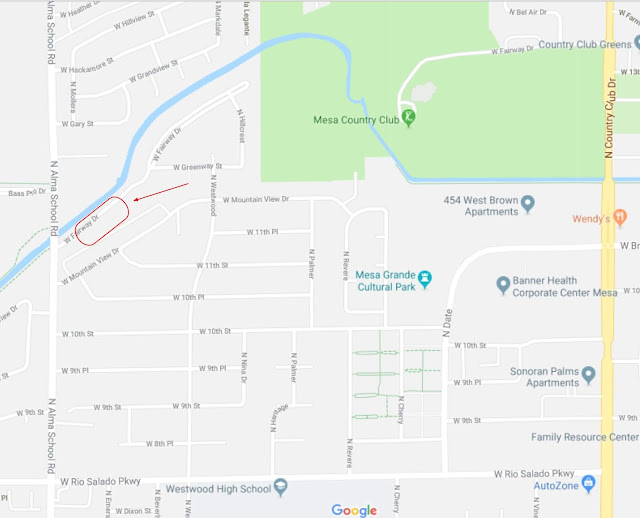Not long ago, my mother loaned me a photo album that Grandma Ella had put together about 20 years ago. Ella compiled photographs of herself and Ralph growing up, as well as photos of their parents, grandparents, and beyond, making identical albums for each of their four living children. This album is such a treasure!
I happily scanned the pages of the album and started posting photos to FamilySearch, tagging the individuals who had been labeled in the pictures.
For some photos, such as a set of three extended family photos, only three of 12-22 individuals were identified: John Virgil Mitchell (1908-1954; Ralph's father), John Payne Mitchell (1849-1928), and Mary Adaline Stockwell Mitchell (1869-1959) (John Virgil Mitchell's parents/Ralph's paternal grandparents). And there was no additional information about where and when the photos were taken.
 |
| The Mitchell extended family, with previously only 3 family members identified |
Not long after I posted these to FamilySearch, I received a message from cousin JC, whom I had connected with before on FamilySearch. She is also a descendant of Mary Adaline Stockwell Mitchell, through her first husband Joseph Louis Mitchell, while Ralph is a descendant of her second husband, John Payne Mitchell. Ralph and JC are 1/2 first cousins once removed. We'll just say "cousins," as that's less complicated.
But here's the neat part: JC had never seen the 3 particular photos I had posted, but she recognized her mother, grandparents, and aunts and uncles in the photos, as her family had a similar photo taken by the same photographer that same day in the same location. JC has in her possession the similar photos with notes on them, which she inherited when her mother passed away 5 years ago.
With JC's help, here's what we now know:
These photos are of Mary Adaline Stockwell Mitchell's family, specifically three of her daughters from her first husband Joseph Louis Mitchell - Edna Lee Mitchell Brawdy/Abbott, Sylvia Renae Mitchell Newton, and Celia Ann Mitchell Graeber with their spouses and children, and John Virgil Mitchell (a son from her 2nd husband John P. Mitchell. No relationship to her 1st husband.)
These were taken on the farm of Walter James Newton and Sylvia Renae Mitchell Newton in Springer, Colfax, New Mexico in the summer of 1924.
It feels so satisfying to know for sure the faces in these photos. As I went through and labeled the names, I found myself saying, "Oh, hello! It's so nice to put a name to a face!" And I chuckled at the children pictured: Little girls holding their dollies, others shielding their faces from the sun, and hair that is more ruffled than coiffed. It seems that it was a battle then, just as it is today, to have that "perfect" family photo taken. But in this case I'd like to apply the definition of "perfect" to be "whole" or "complete," in which case, these photos are now perfect.
Thank you, cousin JC!
 Recently while on Ancestry.com, I stumbled upon on the yearbook for Mesa Union High School from 1951. This would have been when Ella was a senior and Ralph was a junior. These pictures are such gems! By the number of photos of her, we can see that Ella was quite involved in school clubs and activities, and Ralph was certainly looking dapper in his class photo.
Recently while on Ancestry.com, I stumbled upon on the yearbook for Mesa Union High School from 1951. This would have been when Ella was a senior and Ralph was a junior. These pictures are such gems! By the number of photos of her, we can see that Ella was quite involved in school clubs and activities, and Ralph was certainly looking dapper in his class photo.






























